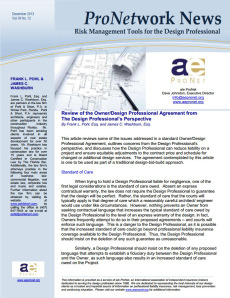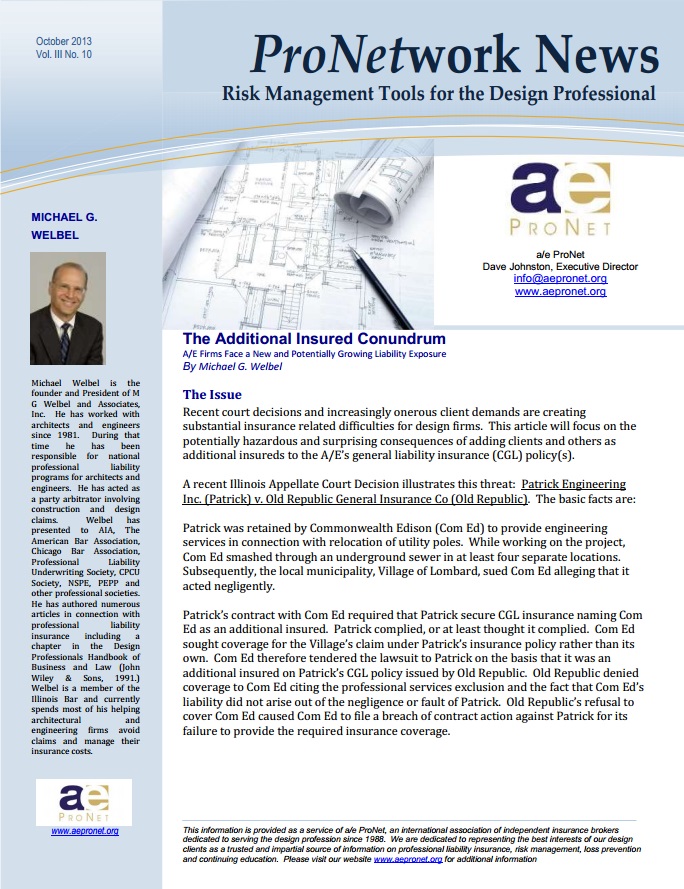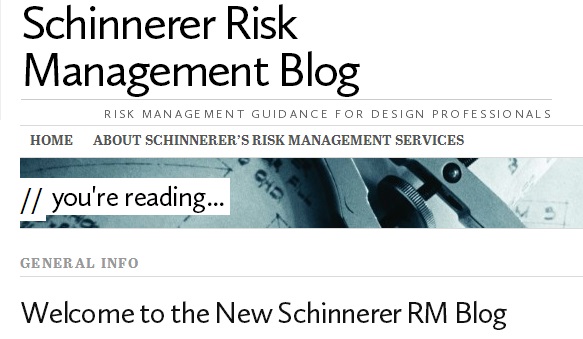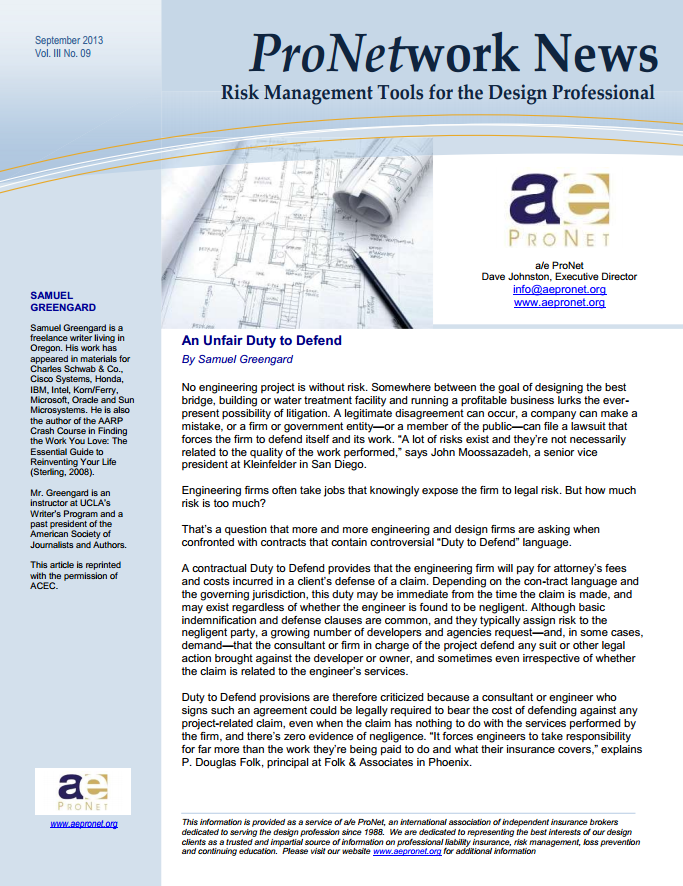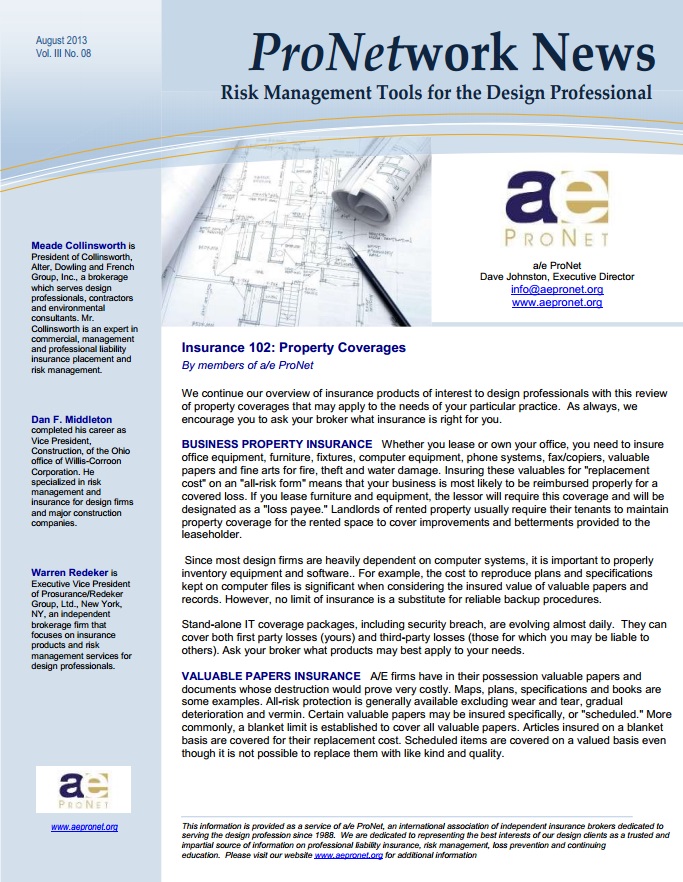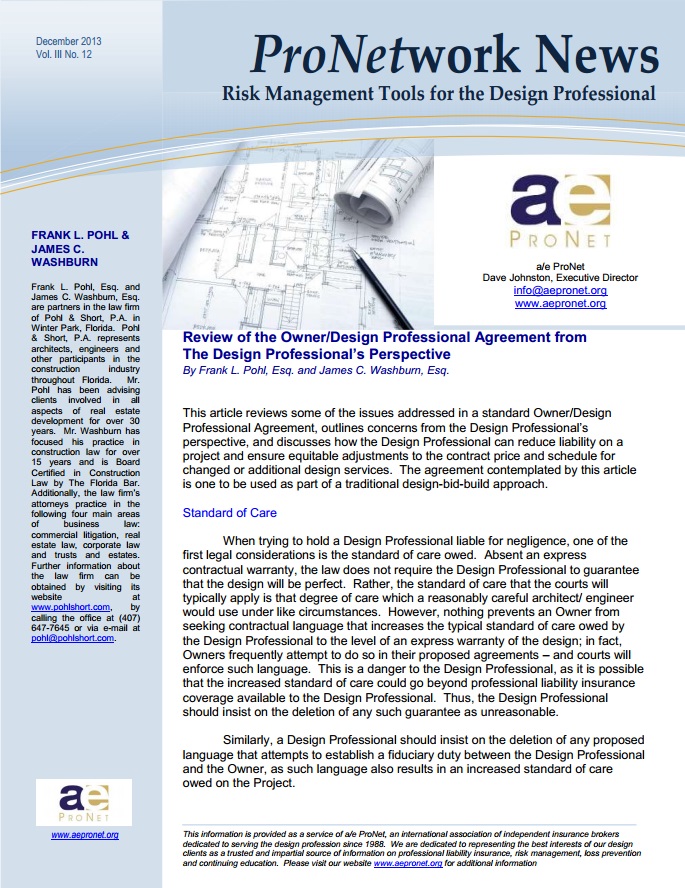 This article reviews some of the issues addressed in a standard Owner/Design Professional Agreement, outlines concerns from the Design Professional’s perspective, and discusses how the Design Professional can reduce liability on a project and ensure equitable adjustments to the contract price and schedule for changed or additional design services. The agreement contemplated by this article is one to be used as part of a traditional design-bid-build approach.
This article reviews some of the issues addressed in a standard Owner/Design Professional Agreement, outlines concerns from the Design Professional’s perspective, and discusses how the Design Professional can reduce liability on a project and ensure equitable adjustments to the contract price and schedule for changed or additional design services. The agreement contemplated by this article is one to be used as part of a traditional design-bid-build approach.
Standard of Care
When trying to hold a Design Professional liable for negligence, one of the first legal considerations is the standard of care owed. Absent an express contractual warranty, the law does not require the Design Professional to guarantee that the design will be perfect. Rather, the standard of care that the courts will typically apply is that degree of care which a reasonably careful architect/ engineer would use under like circumstances. However, nothing prevents an Owner from seeking contractual language that increases the typical standard of care owed by the Design Professional to the level of an express warranty of the design; in fact, Owners frequently attempt to do so in their proposed agreements – and courts will enforce such language. This is a danger to the Design Professional, as it is possible that the increased standard of care could go beyond professional liability insurance coverage available to the Design Professional. Thus, the Design Professional should insist on the deletion of any such guarantee as unreasonable.
Similarly, a Design Professional should insist on the deletion of any proposed language that attempts to establish a fiduciary duty between the Design Professional and the Owner, as such language also results in an increased standard of care owed on the Project. Continue reading “Review of the Owner/Design Professional Agreement from The Design Professional’s Perspective”

